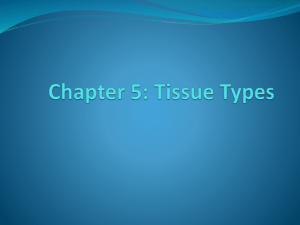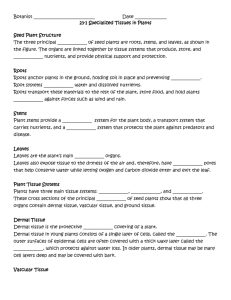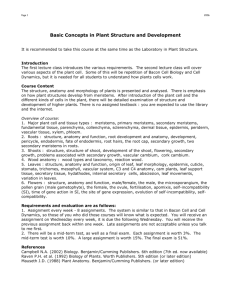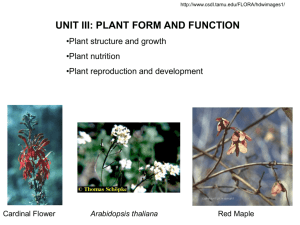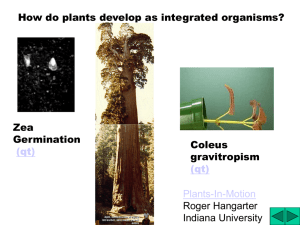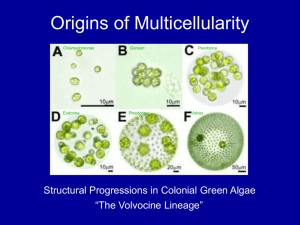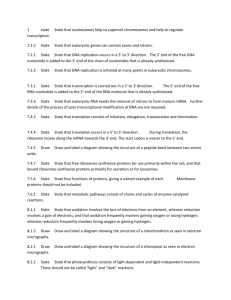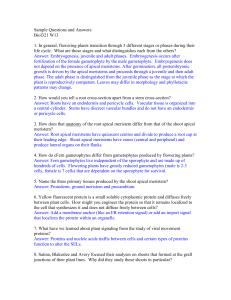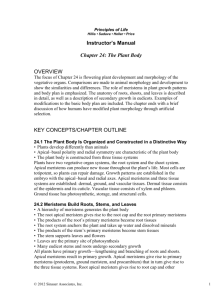III. PRIMARY PLANT BODY Bot 404—Fall 2004 A. Primary vs
advertisement
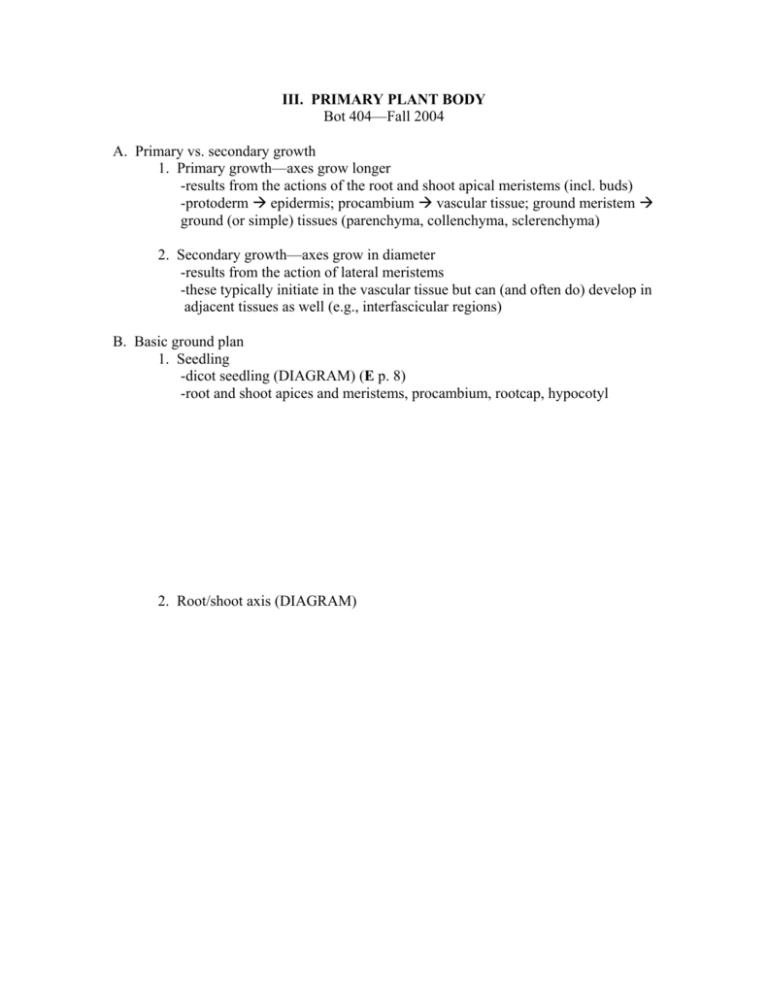
III. PRIMARY PLANT BODY Bot 404—Fall 2004 A. Primary vs. secondary growth 1. Primary growth—axes grow longer -results from the actions of the root and shoot apical meristems (incl. buds) -protoderm Æ epidermis; procambium Æ vascular tissue; ground meristem Æ ground (or simple) tissues (parenchyma, collenchyma, sclerenchyma) 2. Secondary growth—axes grow in diameter -results from the action of lateral meristems -these typically initiate in the vascular tissue but can (and often do) develop in adjacent tissues as well (e.g., interfascicular regions) B. Basic ground plan 1. Seedling -dicot seedling (DIAGRAM) (E p. 8) -root and shoot apices and meristems, procambium, rootcap, hypocotyl 2. Root/shoot axis (DIAGRAM) C. Functions of shoots -production and elevation of leaves and reproductive tissues -long-distance transport of water and nutrients *-storage *-perennating organs (e.g., corms, bulbs, tubers, rhizomes) -means of dispersal/asexual reproduction (e.g., rhizomes, stolons, bulbs, tubers) *-housing of symbiotic organisms (e.g., N-fixing bacteria) D. Functions of roots -anchorage (including contractile roots) either in subterranean substrate or for epiphytes aerial roots help anchor the plant to its support -absorption and conduction of water and dissolved minerals *-storage (various products) *-perennating organs (survival through harsh conditions, e.g., root crown) -source of hormones (e.g., cytokinin, gibberellins) -specializations for: stem support (aerial or prop roots); aeration (e.g., bald cypress knees); defense (spines); asexual reproduction (root buds in dogbane); repositioning (contractile roots) -haustoria in parasitic plants *-housing of symbiotic organisms (e.g., mycorrhizae, N-fixing bacteria) -“communication” (signal transduction?) where roots of different individuals or different species might be in contact; allelopathy where harmful substances are produced that discourage other plants -rhizomes, stolons, corms, bulbs, tubers are not root structures, rather they are modified stems E. Introduction to meristems -meristematic region includes a meristem and an area of relatively rapid cell division and growth -meristem is a cell or group of cells whose principal function is to divide in an organized manner -plants have an open or indeterminate pattern of growth -functions of meristems: 1) establish patterns 2) source of mitotically young cells -function of meristematic regions: 1) cell division and growth 2) differentiation of tissues -meristematic cells are included in the concept of synthetic parenchyma; metabolically active and densely cytoplasmic, several small vacuoles instead of one large one; generally small in size and isodiametric in shape (major exception—fusiform initials of vascular cambium) -types of meristems based on position (M pp. 84-85): 1) apical meristems—at apex of organ they produce 2) basal meristems—at base of organ they produce 3) intercalary meristems—occur between their derivates 4) lateral meristems—located at periphery of an organ (vascular cambium is also intercalary) 5) axillary meristems—apical meristems of buds in leaf axils -types of meristems based on derivates (M p. 85): 1) protoderm—gives rise to epidermal cells 2) procambium—produces primary vascular tissues 3) ground meristem—produces pith, cortex (large amounts of homogenous tissue) 4) promeristem—gives rise to other meristems or other parts of the same meristem
